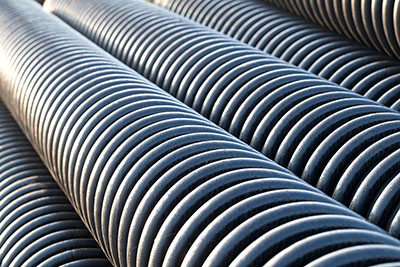Exterior Building Products
Composite Lumber
- This includes decking, railing, outdoor furniture, landscaping timbers, etc.
Purchasing information:
- These products are all included in the EPA CPG’s Parks and Recreation Products list, with recommendations for recycled content percentage levels.
- Composite lumber can be made from recycled milk jugs, plastic bags and plastic film. Some recycled composite lumber includes recycled wood fiber while others include fiberglass or other fillers in order to add strength and to give the plastic a more natural appearance.
- Composite lumber can last longer than wood in exterior applications such as decks, railing and fencing without requiring the on-going maintenance that wood requires. It is resistant to insects, rot and weathering. Therefore, the life cycle cost of composite lumber is often less than treated lumber.
- The structural support required for plastic lumber will be different that those of wood:
Composite lumber decking manufacturers should provide details on the maximum span between supports, as well as the types of metal fasteners to use.
Composite lumber furniture is often designed in a way that allows the span of the lumber to be supported more often so that it doesn’t sag over time.
- In 1993 a “Plastic Lumber Trade Association” was formed and worked with ASTM to develop test methods to evaluate quality standards for recycled plastic lumber (ASTM Plastic Lumber Standards). Lumber manufacturers should be able to provide details about their product’s conformance to these standards.
Key specifications:
- The product shall meet or exceed the federal CPG guidelines for post-consumer recycled content.
- Product suppliers shall provide ASTM test results that are pertinent to that product’s performance.
- Product suppliers shall provide life cycle cost estimates comparing their lumber to wood.
Resources for additional information:
- ASTM News, Recycled Plastic Lumber Standards- https://www.astm.org/
(type plastic lumber into search tool)
Non-Pressure Pipe - Drainage or Conduit
Purchasing information:
- Non-pressure pipe is used widely in construction, communications, municipal, industrial, agricultural, and mining applications. It can be made with HDPE plastic, PVC plastic, steel, or concrete. Each of these has a separate recommendation for recycled content in the federal CPG guidelines.
- Other information can be found on the APR Demand Champions PCR Vendor Database, https://plasticsrecycling.org/recycling-demand-champions/vendors, under the “Government Products” listing.
- The Association of Standards and Testing Materials (ASTM) and the American Association of State Highway and Transportation Officials (AASHTO) have a series of standards for draining and conduit piping that relates to the type of material the pipe is made of as well as the application. (https://www.epa.gov/smm/nonpressure-pipe-specifications-under-comprehensive-procurement-guidelines#Plastic)
Key specifications:
- The product shall meet or exceed the federal CPG guidelines for post-consumer recycled content.
- Product vendor shall show compliance with the ASTM and AASHTO standards for the particular application. (https://www.epa.gov/smm/nonpressure-pipe-specifications-under-comprehensive-procurement-guidelines#Plastic)
Resources for additional information:
- Comprehensive Procurement Guidelines for Construction Products – https://www.epa.gov/smm/comprehensive-procurement-guidelines-construction-products
- EPA’s 2007 Buy Recycled Series: Construction Products - https://www.epa.gov/sites/production/files/2016-02/documents/construct.pdf
- US Green Building Council – https://www.usgbc.org/
- APR Demand Champions PCR Vendor Database, https://plasticsrecycling.org/recycling-demand-champions/vendors